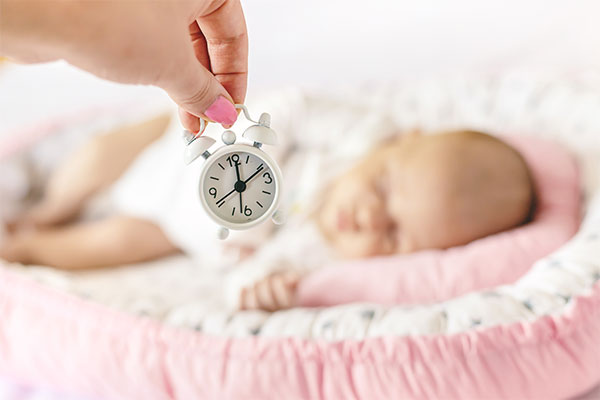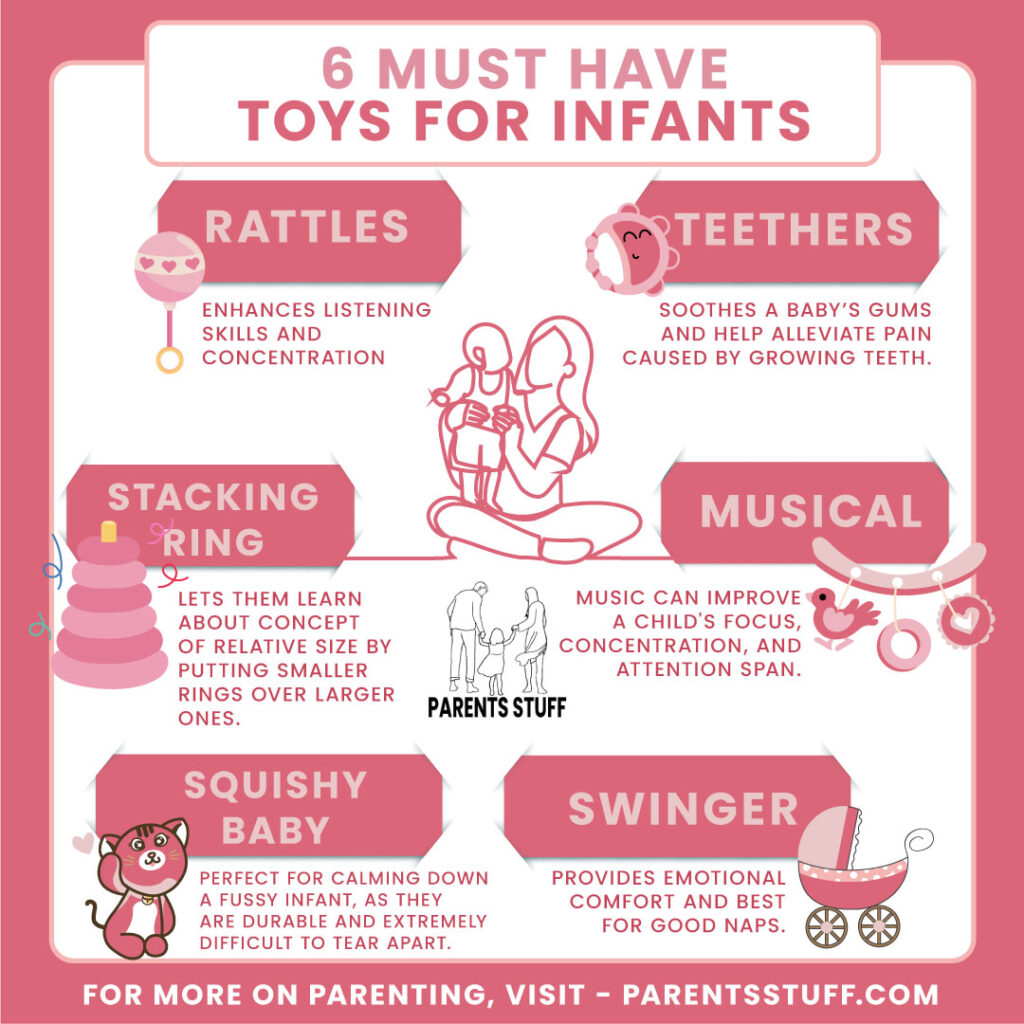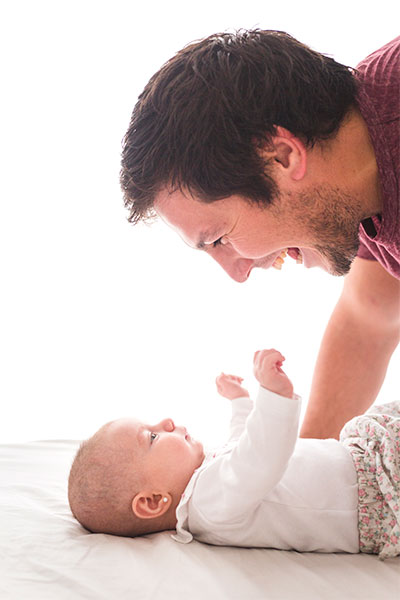Let’s talk about the elephant in the room: you’re probably reading this at 2 AM while bouncing a crying baby, wondering if you’ll ever sleep again. Here’s the good news: you’re not alone, you’re not doing anything wrong, and there are actually science-backed ways to help both you and your little one get better sleep. Sleep hacks for babies aren’t just wishful thinking or old wives’ tales passed down through generations. Today’s parents have access to decades of pediatric sleep research, evidence-based techniques, and proven strategies that can transform those endless nights into manageable routines.
The reality is that every baby is different, and what works for your neighbor’s “perfect sleeper” might not work for your little night owl. But armed with the right knowledge and realistic expectations, you can create a sleep environment and routine that works for your family’s unique situation.
Understanding Baby Sleep: The Science Behind Those Sleepless Nights
How Baby Sleep Differs From Adult Sleep?
Your baby’s sleep patterns aren’t just miniature versions of adult sleep: they’re completely different biological processes that evolve rapidly during the first year of life.
Newborns spend about 16-17 hours sleeping per day, but in short 2-4 hour stretches. Their sleep cycles are only 50-60 minutes long (compared to adult 90-minute cycles), and they spend more time in active sleep phases, which is why they seem to wake up so easily.
Key Differences in Baby Sleep:
- Shorter sleep cycles mean more frequent wake-ups
- More time in light sleep makes them easier to disturb
- Circadian rhythms aren’t fully developed until 3-4 months
- Sleep consolidation happens gradually over the first year
The Development of Sleep Patterns
Understanding how sleep develops helps set realistic expectations and guides your approach to sleep training and routine establishment.
0-3 Months:
- No established circadian rhythm
- Sleep occurs in random 2-4 hour chunks
- Day and night confusion is completely normal
- Focus on safe sleep practices over scheduling
3-6 Months:
- Circadian rhythms begin developing
- Longer stretches of nighttime sleep emerge
- Nap patterns start becoming more predictable
- Sleep training becomes more effective
6-12 Months:
- Most babies can sleep through the night physiologically
- Naps consolidate into 2-3 predictable periods
- Sleep regressions may occur due to developmental leaps
- Consistent routines become increasingly important
Evidence-Based Sleep Safety: Non-Negotiable Foundations

1. The ABCs of Safe Sleep
Before diving into sleep optimization techniques, we must establish the foundation of safe sleep practices. Safe sleep programs have been shown to reduce sudden unexpected infant death (SUID), which remains a leading cause of infant mortality.
A – Alone:
- Babies should sleep alone in their own sleep space
- No co-sleeping in adult beds, sofas, or chairs
- Room-sharing is recommended for at least the first 6 months
B – Back:
- Always place babies on their backs for sleep
- Back sleeping reduces SIDS risk by 50%
- Continue back sleeping even after babies can roll over
C – Crib:
- Use only safety-approved cribs, bassinets, or play yards
- Firm, flat sleep surface with fitted sheet only
- No bumpers, blankets, toys, or loose bedding

2. Safe Sleep Environment Setup
Current pediatric guidelines emphasize using flat, non-inclined sleep surfaces that conform to Consumer Product Safety Commission standards.
Essential Safety Elements:
- Room temperature between 68-72°F
- Blackout curtains or shades for darkness
- Safe distance from windows, blinds, and cords
- Properly functioning smoke and carbon monoxide detectors
Items to Avoid:
- Inclined sleep products or rockers
- Weighted sleep products or blankets
- Positioners or wedges
- Soft bedding or stuffed animals
ways to improve babys digestive system
The Power of Swaddling: Recreating the Womb Environment
Science Behind Swaddling Success
Swaddling works because it recreates the snug environment babies experienced in the womb, helping to calm the Moro reflex (startle response) that often wakes sleeping infants.
Research shows that swaddling plus white noise after giving a baby enough time to digest milk can quickly boost baby sleep while keeping them safely on their backs.
Swaddling Benefits:
- Reduces startle reflex wake-ups
- Provides comfort and security
- Helps maintain back sleeping position
- Can extend sleep periods significantly
Proper Swaddling Techniques
Safe Swaddling Steps:
1. Hip-Healthy Positioning: Allow room for hip and leg movement to prevent hip dysplasia
2. Arms-Only Approach: Some babies prefer having their arms swaddled while legs remain free
3. Proper Tightness: Snug around arms and chest, loose around hips and legs
4. Temperature Monitoring: Use lighter clothing underneath to prevent overheating
When to Stop Swaddling:
- When baby shows signs of rolling (usually 3-4 months)
- If baby consistently breaks out of swaddle
- During any illness or fever
- When transitioning to larger sleep space
Swaddle Transition Strategies
Moving away from swaddling doesn’t have to mean sleep disruption. Gradual transitions work best for most families.
Transition Methods:
- One Arm Out: Start with dominant arm for a few nights
- Arms-Up Swaddles: Use products that allow natural arm positioning
- Sleep Sacks: Transition to wearable blankets for continued comfort
- Gradual Loosening: Make swaddle progressively looser over time

White Noise: Your Secret Weapon for Better Sleep
The Science of Sound and Sleep
White noise works by masking sudden sounds that might wake your baby while providing consistent, soothing background noise that mimics the sounds of the womb.
To use white noise safely for babies, machines should be kept at least 7 feet away from the crib and set between 57-68 decibels for calm babies.
How White Noise Helps:
- Masks household and external noises
- Provides consistent sound environment
- Triggers sleep associations when used consistently
- Helps babies transition between sleep cycles
Choosing and Using White Noise Effectively
Optimal White Noise Settings:
- Volume: Around 60-65 decibels, roughly as loud as a shower
- Distance: At least 7 feet from baby’s sleep area
- Consistency: Use for all naps and nighttime sleep
- Duration: Recommended until at least 1 year of age
White Noise Options:
- Dedicated sound machines with various sound options
- Apps on devices placed safely away from crib
- Fans for air circulation and white noise
- Nature sounds like rain or ocean waves
Safety Considerations:
- Never place sound machines in or on the crib
- Ensure cords are out of reach
- Monitor volume levels regularly
- Choose machines with timer options if desired
Sleep Schedule Strategies: Creating Predictable Routines

1. Age-Appropriate Sleep Expectations
Sleep schedules should align with developmental stages, with white noise serving as a consistent sleep cue throughout the first year.
Newborn (0-3 months):
- Total sleep: 14-17 hours per day
- Night sleep: 8-9 hours (with frequent wake-ups)
- Daytime naps: 6-8 hours spread across multiple naps
- Wake windows: 45-60 minutes initially
3-6 Months:
- Total sleep: 12-16 hours per day
- Night sleep: 9-11 hours (longer stretches possible)
- Daytime naps: 3-5 hours across 3-4 naps
- Wake windows: 1.5-2.5 hours
6-12 Months:
- Total sleep: 12-14 hours per day
- Night sleep: 10-12 hours (most can sleep through night)
- Daytime naps: 2-3 hours across 2-3 naps
- Wake windows: 2.5-4 hours
2. Building Effective Sleep Routines
Consistency is key to helping your baby’s internal clock develop and creating positive sleep associations.
Essential Routine Elements:
- Same sequence of activities before sleep
- Consistent timing (within 30 minutes)
- Calm, quiet activities in the 30 minutes before sleep
- Clear transition from awake to sleep environment
Sample Bedtime Routine (30-45 minutes):
- Bath or diaper change
- Feeding session
- Quiet activity (reading, singing)
- Into sleep attire and swaddle/sleep sack
- Final cuddle and into crib awake
3. Managing Sleep Regressions
Sleep regressions are temporary disruptions that often coincide with developmental milestones and are completely normal.
Common Regression Periods:
- 4 months: Major sleep cycle development
- 6 months: Increased mobility and separation anxiety
- 8-10 months: Cognitive leaps and standing skills
- 12 months: Walking development and schedule changes
Regression Management Strategies:
- Maintain consistent routines despite disruptions
- Offer extra comfort without creating new sleep dependencies
- Ensure adequate daytime nutrition and activity
- Be patient – most regressions last 2-4 weeks

Sleep Training Methods: Evidence-Based Approaches
Understanding Different Sleep Training Philosophies
Research shows that sleep training improves infant sleep problems, with about 1 in 4 to 1 in 10 babies benefiting compared to no sleep training, with no adverse effects reported after 5 years.
Graduated Extinction (Ferber Method):
- Check on baby at increasing intervals
- Provide brief comfort without picking up
- Gradually increase time between checks
- Usually effective within 3-7 days
Total Extinction (Cry It Out):
- Put baby down awake and don’t return until morning
- Fastest method but emotionally challenging for parents
- Not recommended for babies under 4-6 months
- Requires commitment and consistency
Fading/Chair Method:
- Gradual reduction of parental presence
- Start by sitting next to crib, slowly moving further away
- Takes longer but gentler approach
- Good for families uncomfortable with crying
When Sleep Training is Appropriate?
Ideal Timing Factors:
- Baby is at least 4-6 months old
- Healthy weight gain and growth
- No major life changes or travel planned
- Parents are committed to consistency
- Medical issues have been ruled out
Pre-Sleep Training Preparation:
- Establish consistent routines for 1-2 weeks
- Ensure optimal sleep environment
- Address any feeding issues
- Choose method that aligns with family values
- Prepare family members and caregivers
Troubleshooting Common Sleep Training Challenges
- Extended Crying:
- Ensure all basic needs are met first
- Check for illness or discomfort
- Consider if chosen method suits baby’s temperament
- Stay consistent for at least 3-5 days before adjusting
2. Inconsistent Results:
- Review routine consistency across all caregivers
- Examine nap schedule and wake windows
- Consider environmental factors
- Assess if expectations are age-appropriate
Creating the Optimal Sleep Environment

1. Room Setup for Maximum Sleep Success
The physical environment plays a crucial role in promoting quality sleep for babies and can significantly impact the success of any sleep strategy.
Lighting Optimization:
- Blackout curtains or shades for complete darkness
- Red night light for necessary nighttime activities
- Bright light exposure during wake times
- Gradual dimming before sleep periods
Temperature Control:
- Maintain 68-72°F for optimal comfort
- Use breathable sleepwear and sleep sacks
- Ensure good air circulation without direct drafts
- Monitor baby’s temperature regularly
Minimizing Disruptions:
- Place crib away from high-traffic areas
- Use door barriers to muffle household sounds
- Consider white noise to mask sudden noises
- Keep sleep space clutter-free and calming
Feeding and Sleep: The Critical Connection
Timing Feeds for Better Sleep
The relationship between feeding and sleep is complex, with both breast and bottle-fed babies benefiting from strategic feeding timing.
Newborn Feeding Considerations:
- Feed on demand while establishing milk supply
- Allow at least 30 minutes between feed and sleep
- Burp thoroughly to prevent gas discomfort
- Consider dream feeds to extend sleep periods
Establishing Feed-Sleep Balance:
- Separate feeding from sleep routine when possible
- Avoid feeding to sleep as primary soothing method
- Ensure adequate daytime nutrition
- Address feeding issues that may disrupt sleep
2. Night Feeding Strategies
Minimizing Night Disruption:
- Keep room dimly lit during feeds
- Avoid engaging in stimulating activities
- Change diapers before feeding to prevent re-waking
- Use efficient feeding positions
- Return to sleep environment quickly
Gradual Night Weaning:
- Ensure adequate daytime nutrition first
- Slowly reduce night feeding duration or volume
- Offer comfort without feeding when appropriate
- Consult healthcare provider for guidance
Managing Parent Sleep and Wellbeing
Sleep Strategies for Exhausted Parents
Taking care of yourself isn’t selfish: it’s essential for caring for your baby effectively.
Parent Sleep Optimization:
- Sleep when baby sleeps, even for short periods
- Take turns with night duties when possible
- Create comfortable sleep environment for yourself
- Practice good sleep hygiene despite disruptions
Daytime Recovery Strategies:
- Accept help from family and friends
- Prioritize rest over household tasks
- Get outside for natural light exposure
- Stay hydrated and eat regular meals
Recognizing When to Seek Help
Red Flags Requiring Professional Support:
- Persistent infant sleep issues beyond 6 months
- Signs of postpartum depression or anxiety
- Extreme exhaustion affecting daily functioning
- Relationship strain due to sleep deprivation
Support Resources:
- Pediatric sleep consultants
- Postpartum doulas
- New parent support groups
- Healthcare provider guidance
Advanced Sleep Strategies for Persistent Challenges
1. Addressing Medical Issues Affecting Sleep
Sometimes sleep issues stem from underlying medical conditions that require professional attention.
Common Medical Sleep Disruptors:
- Reflux or digestive issues
- Food allergies or intolerances
- Sleep apnea or breathing difficulties
- Developmental delays affecting sleep patterns
When to Consult Healthcare Providers:
- Persistent sleep issues despite consistent efforts
- Excessive crying or signs of discomfort
- Feeding difficulties affecting growth
- Concerns about breathing during sleep
Customizing Approaches for Different Temperaments
Not all babies respond the same way to sleep strategies, and understanding your baby’s temperament helps guide approach selection.
High-Needs Babies:
- May require more gradual approaches
- Benefit from extra comfort and consistency
- Often need longer adjustment periods
- Respond well to predictable routines
Easy-Going Babies:
- Often adapt quickly to sleep training
- May handle schedule changes better
- Less likely to experience severe regressions
- Usually respond to standard approaches
3. Multi-Child Sleep Management
Managing sleep for multiple children requires strategic planning and realistic expectations.
Sibling Sleep Considerations:
- Stagger bedtimes to manage individual needs
- Use white noise to prevent wake-ups
- Create separate sleep spaces when possible
- Involve older children in quiet bedtime routines
Frequently Asked Questions (FAQs)
Q. When should I start implementing sleep hacks for babies?
You can begin safe sleep practices immediately from birth, including back sleeping, swaddling, and white noise. However, formal sleep training methods should wait until at least 4-6 months, when babies are developmentally ready and have established basic circadian rhythms. Focus on safe sleep and gentle routines in the early months, then gradually introduce more structured approaches as your baby matures.
Q. How long should I expect sleep training to take?
Most evidence-based sleep hacks for babies show results within 3-7 days for methods like graduated extinction, while gentler approaches may take 2-3 weeks. Every baby is different, and factors like age, temperament, and consistency affect the timeline. It’s important to commit to your chosen method for at least one week before making changes, as inconsistency can prolong the process.
Q. Is it safe to use white noise all night for my baby?
Yes, when used properly, white noise is safe for all-night use. Keep the machine at least 7 feet from your baby’s sleep area, set the volume below 68 decibels (about as loud as a shower), and choose consistent sounds rather than varying or sudden noises. Many families use white noise successfully throughout the first year and beyond as a helpful sleep association.
Q. What should I do if my baby fights the swaddle?
If your baby consistently breaks out of traditional swaddles or seems distressed, try different techniques: arms-up swaddling positions, transitional products that allow some arm movement, or swaddling just the torso while leaving arms free. Some babies prefer being swaddled with one arm out initially. Always stop swaddling once your baby shows signs of rolling, typically around 3-4 months.
Q. How do I know if my baby is ready for sleep training?
Signs your baby may be ready include: being at least 4-6 months old, healthy weight gain, ability to sleep for longer stretches occasionally, established feeding routines, and no major illness or life changes. Your baby should also be putting themselves to sleep sometimes, even if inconsistently. Consult your pediatrician before starting any formal sleep training program.
Q. Can sleep training harm my baby emotionally or developmentally?
Research consistently shows that evidence-based sleep training methods do not cause emotional harm or developmental issues. Studies following children for up to 5 years found no negative effects on attachment, behavior, or emotional development. In fact, better sleep often improves baby’s mood, development, and family relationships. Choose methods that feel right for your family and remain consistent.
Q. What if sleep hacks work for a while but then stop being effective?
Sleep regressions are normal and typically coincide with developmental milestones at 4, 6, 8-10, and 12 months. These temporary disruptions usually last 2-4 weeks. Maintain your routines and sleep environment while being patient during regression periods. If sleep issues persist beyond a month or seem unrelated to development, consider consulting your pediatrician to rule out medical issues.
Q. How do I maintain good sleep habits while traveling or during schedule changes?
Pack familiar sleep items like white noise machines, swaddles or sleep sacks, and blackout options for new environments. Try to maintain core routines even if timing shifts slightly. Allow extra patience for adjustment periods, and return to normal routines as quickly as possible after disruptions. Consistency in your approach matters more than perfect timing during temporary changes.
Conclusion: Your Journey to Better Sleep Starts Now
Here’s the truth about sleep hacks for babies—they’re not magic bullets, but they are evidence-based tools that can transform your family’s sleep experience when used consistently and appropriately. You don’t have to choose between your baby’s well-being and your family’s need for rest.
Every baby is unique, and what works perfectly for one may need adjustments for another. The key is understanding the science behind healthy sleep, implementing safe practices from day one, and being patient with both yourself and your little one as you navigate this challenging but temporary phase.
Start with the basics: a safe sleep environment, appropriate swaddling, consistent white noise, and realistic expectations for your baby’s age. Build routines gradually, stay consistent with your approach, and remember that sleep skills develop over time just like any other milestone.
Most importantly, trust yourself. You know your baby better than anyone, and you have the power to create positive changes in your family’s sleep experience. Whether you’re dealing with a newborn who has days and nights confused or a 6-month-old who still wakes every two hours, there are proven strategies that can help.
Your sleep matters too. Taking care of yourself isn’t selfish: it’s essential for being the parent your baby needs. Implement these evidence-based techniques with confidence, seek support when you need it, and remember that better sleep for everyone is not just a dream: it’s an achievable goal.
Sweet dreams are ahead for your family. You’ve got this.

